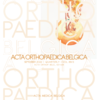The prevalence and risk factors of dislocation after primary total hip arthroplasty
Primary total hip arthroplasty; postoperative dislocation; risk factors; multifactorial logistic analysis
Published online: Jan 20 2023
Abstract
This study aimed to investigate the occurrence of dislocation and risk factors following primary total hip arthroplasty (THA). Retrospective analysis was done on the clinical data of 441patients with primary total hip arthroplasty who were admitted to our hospital between May 2018 and early December 2020. A total of 294 patients without posterior soft tissue repair were included as control group, and a total of 147 patients with repair of the short external rotator muscle and joint capsule were assigned to the repair group. All operated patients were observed to analyze the occurrence and risk of early postoperative dislocation. Within 6 months after hip arthroplasty, the early hip dislocation rate in the repair group was 0.68%, which was significantly lower than that in the control group (4.78%) (P < 0.05). The results of multifactorial analysis showed that age ≥75 years, combined limb or mental illness, artificial femoral head diameter <30 mm, posterolateral approach and prosthesis placement outside the safety zone, and improper handling were risk factors for dislocation (P < 0.05); The incidence of re-dislocation was lower in the targeted intervention group (P < 0.05). The occurrence of dislocation after THA is related to age, gender, and type of orthopedic disease. The risk factors should be explored to develop targeted intervention protocol, decreasing the dislocation rate and improving the prognosis.
